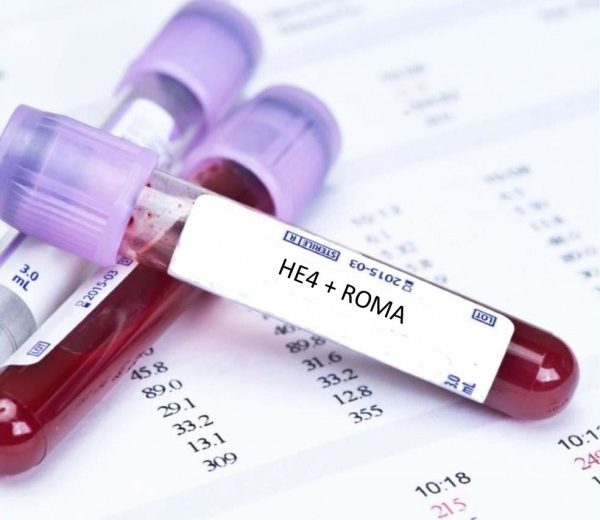Ovarian cancer is the sixth most common cancer in women and the seventh most common cause of cancer death globally. The majority of patients with ovarian cancer are diagnosed in advanced stages due to diffuse symptoms. These patients face poor prognosis with a five-year overall survival of approximately 40–45%. In contrast, early-stage ovarian cancer has excellent curability.
Currently, CA-125 is the most widely used tumour marker for screening of ovarian cancer, in combination with patient’s clinical details and imaging data, and help differentiate malignant lesions from the benign ones. CA-125 is raised in approximately 80% of all epithelial ovarian cancers, and in only 50% of stage I cancers. Used alone it has a low sensitivity in patients with early-stage ovarian cancer. It also shows a low specificity since it is often increased in benign conditions like endometriosis.
In 1999, the Human Epididymis secretory protein 4 (HE4) gene was found to be over-expressed in ovarian cancer and was suggested as a potential serum biomarker for ovarian cancer in 2003. HE4 is a novel tumour marker approved by the US FDA for monitoring recurrence or progressive disease in patients with epithelial ovarian cancer. It is a secretory low molecular weight glycoprotein that is predominantly expressed in epithelial cells of the epididymis and the normal female reproductive tract. Although its physiological functions have not been fully identified, overexpression of the HE4 protein has been found to occur in ovarian carcinomas.
HE4 has shown a sensitivity and specificity of 72.9 and 95%, respectively, for differentiating between types of ovarian masses, which is better than that of CA‑125. It has an obvious difference in the expression level between benign gynaecological diseases such as ovarian cyst, uterine fibroids, endometriosis, endometrial polyps and other ovarian cancers, including endometrial and cervical cancer, which can be used for the differential diagnosis of the disease. HE4 is not elevated in patients with endometriosis irrespective of the extent of endometriosis or the presence of endometrioma, in contrast to CA 125.
Use of HE4 in combination with CA-125 has improved the accuracy of tests for diagnosis and management of women with an ovarian mass and increases the prediction rate for detecting malignant diseases, with a sensitivity of 76.4% and specificity of 95%. As HE4 plasma levels are not elevated in patients with endometriosis, HE4 can be very useful as an additional marker to CA-125 in premenopausal women with suspicion of endometriosis. The high specificity of HE4 reduces the number of patients diagnosed with false positive malignancy avoiding unnecessary surgery.
Recently a combination of CA-125, HE4 and menopausal status to formulate a Risk of Ovarian Malignancy Algorithm (ROMA) is used to predict the presence of a malignant ovarian tumour. ROMA classifies patients into high or low risk for epithelial ovarian cancer (EOC), which further improves the accuracy of early diagnosis of ovarian cancer. The sensitivity and specificity of ROMA are 88.7 and 74.7%, respectively, when applied in cohorts of pre‑ and postmenopausal women.
The median CA-125, HE4 and ROMA serum levels differ significantly between benign and malignant cases and for the pre- and post-menopausal groups separately. The combination of HE4 and CA-125 in the ROMA seems to have higher sensitivity than either biomarker alone.
In postmenopausal women, the levels of HE4 and CA-125 showed similar sensitivity and specificity but the ROMA algorithm increased both sensitivity and specificity. Patients with high preoperative HE4 levels were more likely to have high-grade serous carcinomas and worse prognosis. Researchers have also found HE4 to be elevated in more than half of the ovarian cancer patients who did not have elevated CA125 levels. Such patients with pre-treatment high levels of HE4 levels facilitate follow-up of patients with little or no CA 125 pretreatment elevations.
Last modified: 22/12/2018







